“I just want to be happy”
LA’s hidden “little Brazil” is in danger. These people are trying to save it
LOS ANGELES – From the outside, one can barely notice anything unusual about the small mall that sits at the intersection of Venice and Culver City. No more than 80 thousand square feet, the building, with its pale cream colors, barely calls any attention to itself. But inside, on an innocuous Sunday afternoon, lie over one hundred Brazilians, dancing, singing, and mostly eating to the music and food of their home country. The place has barely any room left, and yet, more people steadily keep coming in. Soon, the DJ, smushed against a corner, plays “Eu só quero é ser feliz,” a famous Brazilian song whose title translates to “I just want to be happy.” Brazilians of all ages stop what they’re doing to sing together to the chorus. Although the party has been going on for hours at this point, barely anyone has left.
Scenes like these are not common for the Brazilian community in Los Angeles. Known for their relative lack of organized representation, such as lacking a proper “Brazilian neighborhood”, Brazilians seldom congregate in one single place in the city. But this mall, appropriately named “Brazilian Mall,” historically stands as an informal meeting place for those seeking to reconnect with the country and community they left behind.
In recent years, the mall has faced new obstacles. With growing economic uncertainty in the Brazilian community and desolated by the coronavirus, few of the original stores and staff remain. Still, there are some who have picked up the mantle, and through this ever-growing list of challenges, hope to maintain the Brazilian Mall as a staple in LA, not only for the Brazilians who have always loved it but also for Americans who hope to get a little taste of Brazil without going too far.
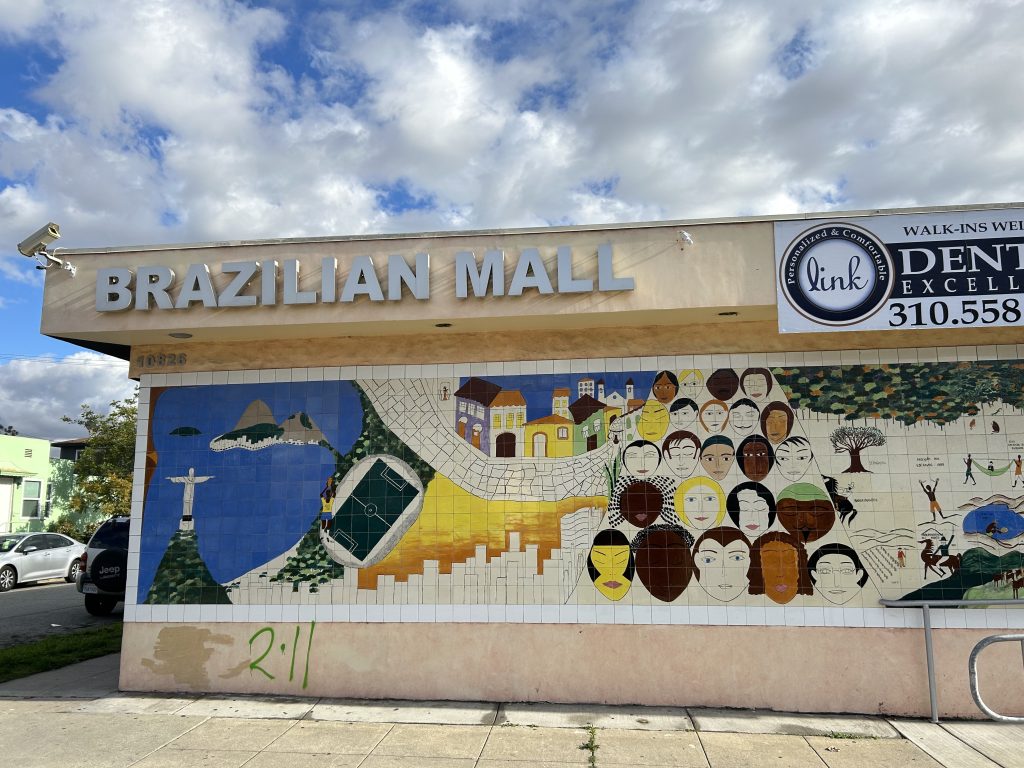
The history of Brazilian immigration to Los Angeles is not well documented, and unsurprisingly so. Unlike other American cities like New York and Miami, one rarely notices a Brazilian diaspora when walking through the streets of Los Angeles. Official numbers, both American and Brazilian, barely cover the demographic at all. It is only thanks to independent organizations, such as the think-tank Migration Policy Institute, that we have somewhat of an estimate available for reference; According to them, between 2017 and 2021, only around 25 thousand Brazilians were living in southern California.
These numbers are disputed by none other than Daniel Roberto Pinto, the Deputy-Consul General of the Brazilian Consulate in Los Angeles. According to him, the consulate estimates that around 100 thousand Brazilians lived in the area in 2020. And although there hasn’t been any official census, he expects that the real number is much higher. The reason behind this discrepancy, he says, is due to one of the main characteristics of the Brazilian community in Los Angeles.
“[The Brazilian community in LA] has low levels of community organization. There is no Brazilian neighborhood in Los Angeles. You find Brazilians in many places. But you don’t hear Portuguese everywhere as you do in Miami,” Pinto said.
Because of this, he argues, it’s almost impossible to make a proper estimate of the population. Still, some elements of the community are well-known to the consulate.
“Firstly, [Brazilians] are dispersed geographically. Secondly, they exhibit a high level of economic and educational diversity. Thirdly, they have a reasonable level of social and labor integration. Finally, they have a low level of associations […] There is no association in defense of Brazilian interests here in California,” he said.
Still, Brazilians have a couple of key organizations here that they flock towards. One of them is a business organization called the Brazil California Chamber of Commerce, a voluntary association that helps Brazilian and Californian businesses to cooperate, both here and abroad. The other one is “CaliFla”, a group where fans of the soccer team “Flamengo” get together to cheer for their team. But out of all of them, perhaps the most well-known is the Brazilian mall, which holds restaurants and stores that sell products from back home. A staple in the community since the late 2000s, the mall has housed many organizations throughout its history, most aimed at maintaining the Brazilian culture alive. But while the mall itself has remained, not all stores were so lucky. With the worsening financial situation of many Brazilians during the mid-2010s, many had to cut “reckless” spending which struck the mall hard. By 2018, the mall had slowly been ripped off its once vibrant identity.
That is when Alberto Claudio Montanari came in. An Argentinian pizza chef, he found the mall after tragedy struck his old restaurant in Santa Monica.
“The building [his restaurant] was in burned down (…) and exactly one year and a week after, it burned down again (…) at that point, I knew I was out of Santa Monica,” he said.
Looking for a place to start again, Montanari learned about the Brazilian Mall, which at the time was looking for a new tenant to take up its defunct Brazilian pizza restaurant. Montaña saw in it a golden opportunity, even though Brazilians and Argentinians often see each other as rivals.
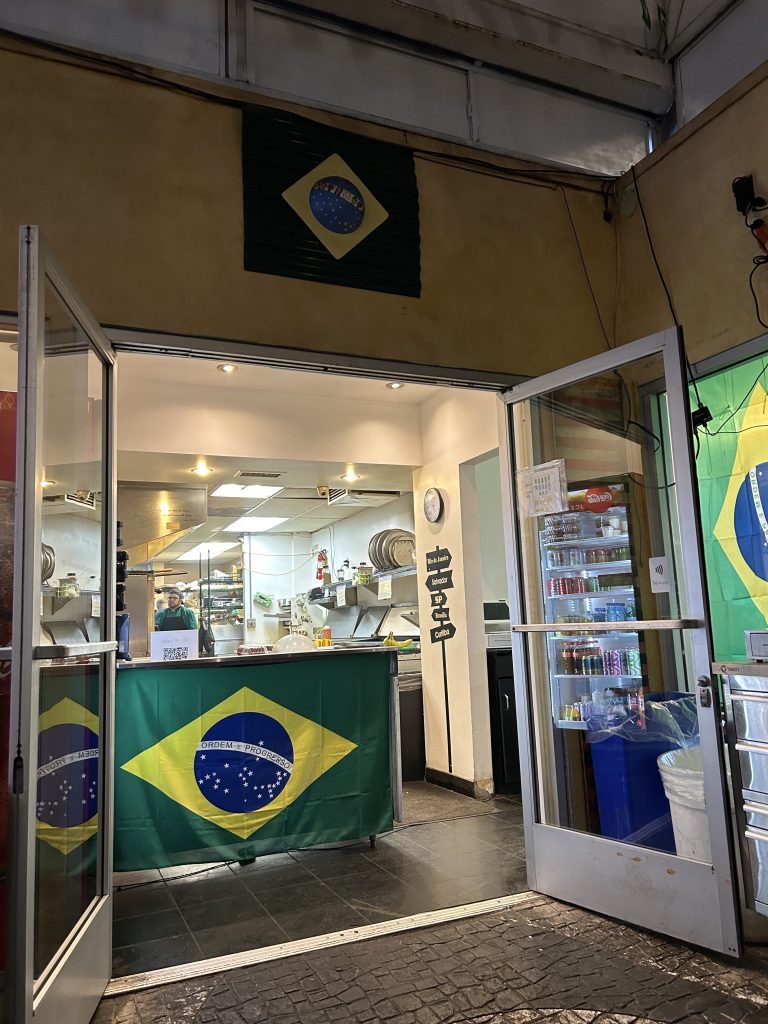
“It was certainly hard in the beginning [being Argentinian],” he said. “The Brazilians found it odd that an Argentinian was making pizza for them and didn’t accept me. But as time went on and I made more friends, the community accepted me.”
Hoping to keep up with the tradition of serving Brazilian-style pizza and to cater to the local community, Montanari inherited the menu of the old restaurant, even though he had little to no idea how to cook the dishes properly.
“I remember cooking a chicken with catupiry,” he said, referring to a popular Brazilan cream cheese mix pizza, “and being told by my friends ‘no, that isn’t how you do it.’ (…) I was surprised because that is how the old restaurant did it! (…) But after that, [the restaurant] started offering the old and the new way of cooking the pizza.”
After a couple of hiccups, Montanari had the restaurant up and running. And surprisingly, the people who had once abandoned the mall started coming back. Still, that wasn’t enough to completely offset the costs. Thinking of a way to expand, Montanari came up with what is now a staple: the Pagode Sundays, a classical Brazilian party style that involves a whole lot of food.
“It’s super popular even nowadays. Lots of people come (…) but it’s also super loud!” he recalled, laughing.
That set the course of how the restaurant would operate in the future. Less just a normal dining experience, it would aim to provide Brazilians with a place to enjoy themselves. But while that was working, there was still room for improvement. This is why Montanari decided to partner with another famous restaurant in the area: Cantinho Brasileiro, which sells traditional Brazilian snacks.
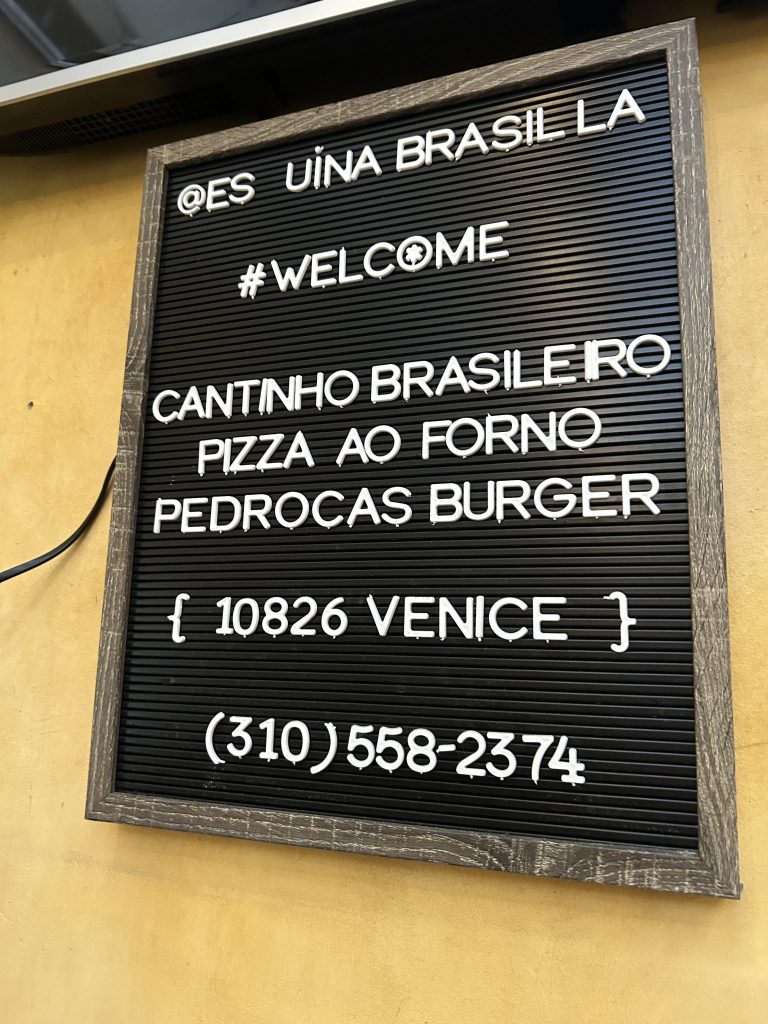
Unfortunately, a year later, the coronavirus pandemic started. And the blooming business had to shut its doors down once again.
“It was really hard on us since we didn’t do delivery before,” Montanari recalled. “Also, during that summer, Culver City put a curfew where all restaurants had to close by noon, and since we normally open at 11, that left us with no time to work at all.”
While the landlords were understanding, Montanari’s expenses still piled up. With a growing threat of closing down, things were looking bleak.
That is until he was introduced to Pedro Carvalho.
Carvalho came to the US in 2016 intending to settle down in Boston. But, due to the extreme weather differences between the US city and his tropical home country of Brazil, he quickly moved to LA. Working a few odd jobs here and there, he settled down as an Uber Delivery Driver for a good two years.
“And then I started making snacks, almost on a whim,” he recalled.
Carvalho, although never having worked as a professional chef before, loved to make food. During a random week in 2020, when a problem in his Uber Eats account didn’t allow him to work, he decided to treat himself and cook a traditional “Brazilian style” burger. After posting it on the internet, he started receiving a lot of positive feedback.
“People were asking me ‘Where did you buy it?’ and I had to tell them I was the one who did it. Then, they’d tell me ‘I’d love it if you made one for me too,’” he said.
After some back and forth, he finally decided to take custom orders. Although he struggled in the beginning due to his lack of experience, he remembers those first orders fondly.
“[The customers] ordered a burger with, let’s say, no lettuce, and I just gave them one with [lettuce],” he said. “But they all told me that, even with the mistakes, they would order again.”
Sadly, even though Carvalho had a lot of engagement from the Brazilian communities thanks to his burgers, he didn’t have the infrastructure to make it into a real restaurant. But after being introduced to Montanari, he saw a way forward.
“[Montanari] offered to do a partnership with me (…) I’d be able to use his kitchen, and I’d be able to help him reach the Brazilian audience. Without that help, I wouldn’t have been able to start a restaurant at all,” Carvalho remembered.
And with that, both Pedrocas Burguer, Carvalho’s restaurant, and Esquina Brazil, the combination of all three partners’ restaurants, came to fruition.
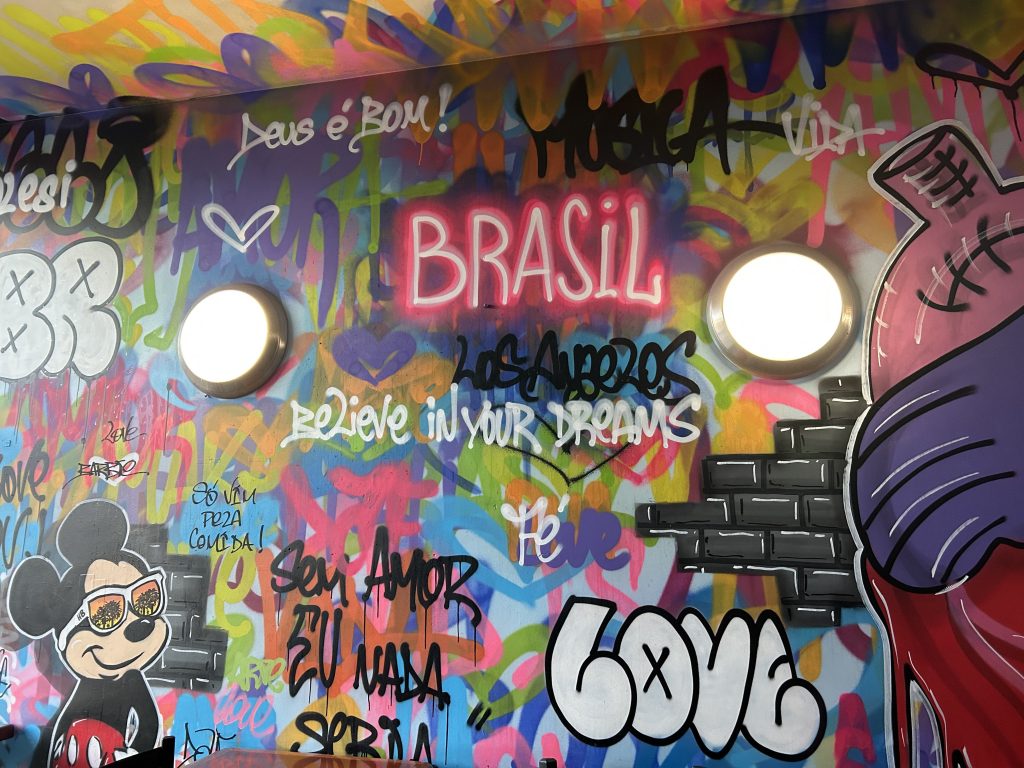
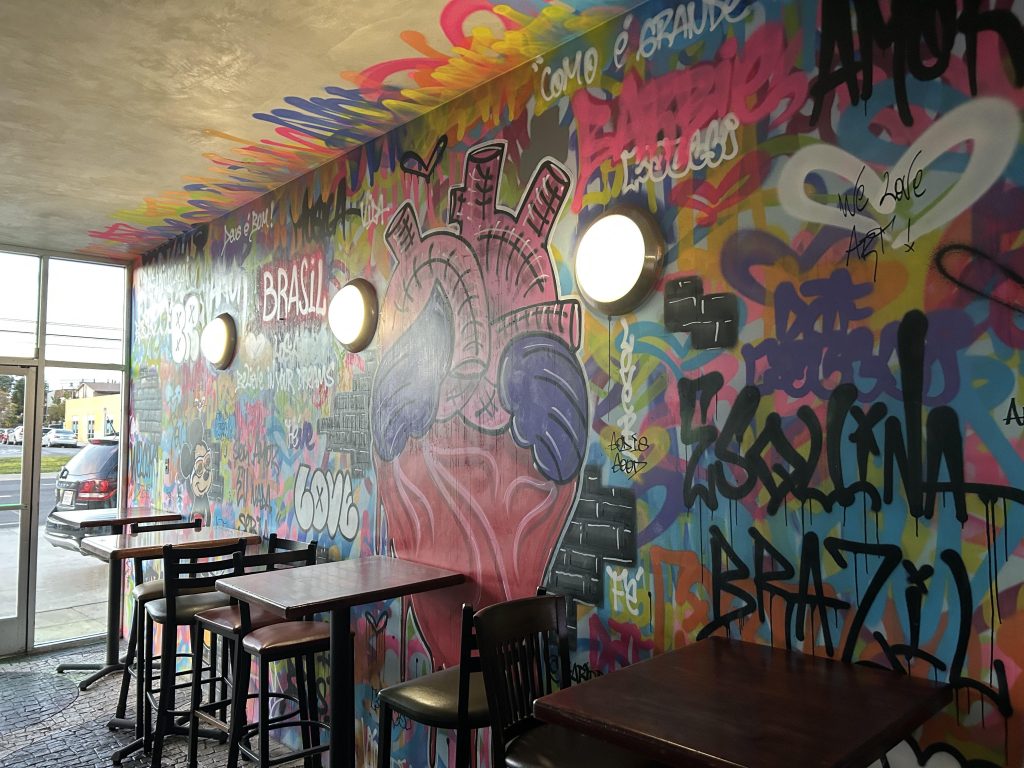
Using the expertise of every single restaurant to its full potential, the trio took advantage of the loosening restrictions in early 2021 to make a definitive comeback. Holding parties every Sunday once again and renovating the interior to make it more welcoming, Esquina Brazil skyrocketed in popularity.
This was all encapsulated in the 2022 World Cup. A staple for the Brazilian community, the restaurant took the opportunity to capitalize on the excitement, displaying games for anyone willing to see.
“On [some matches], there were even people spilling out into the street. We had to put some old TVs out there so everyone could watch!” Montanari said.
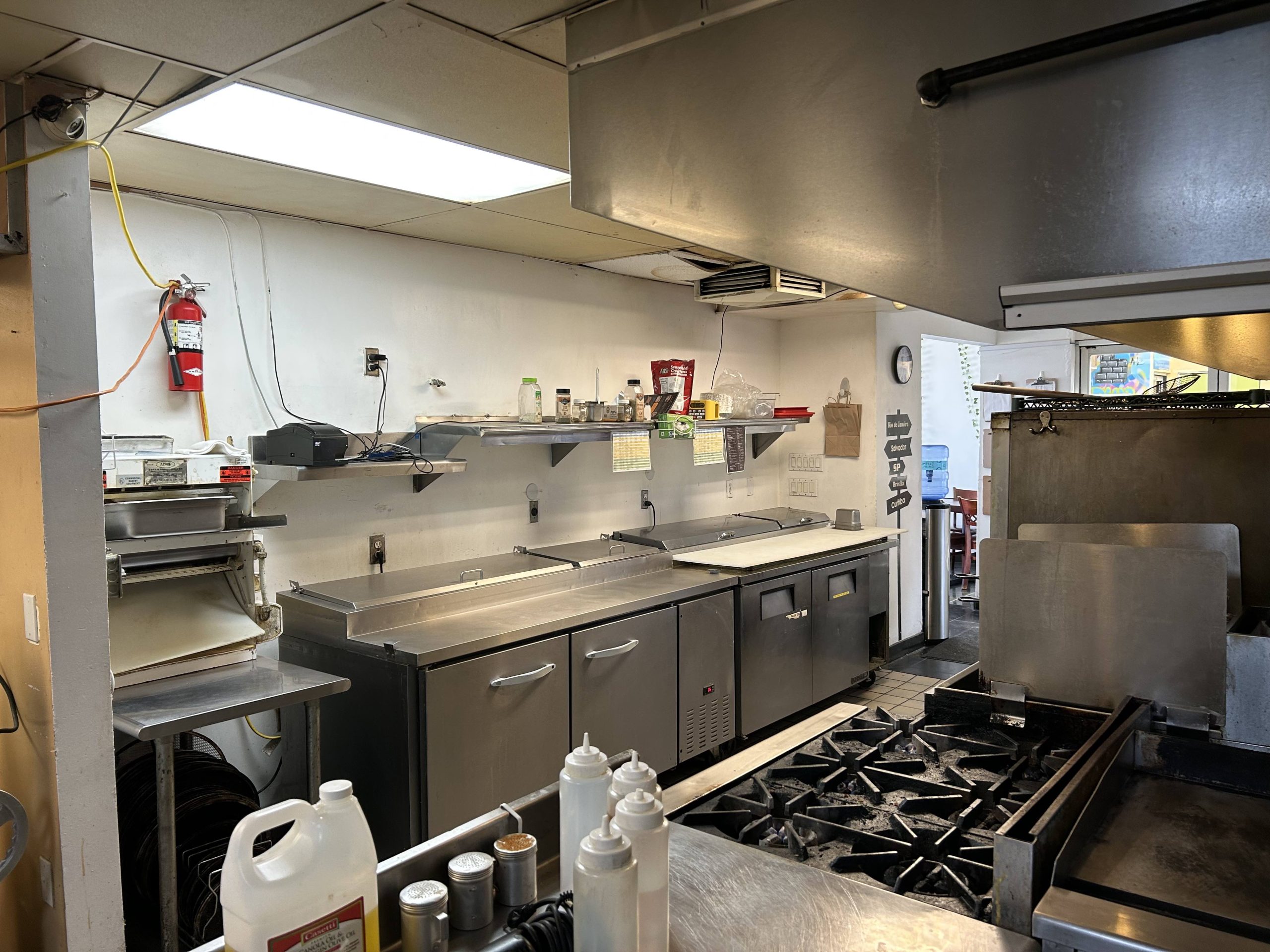
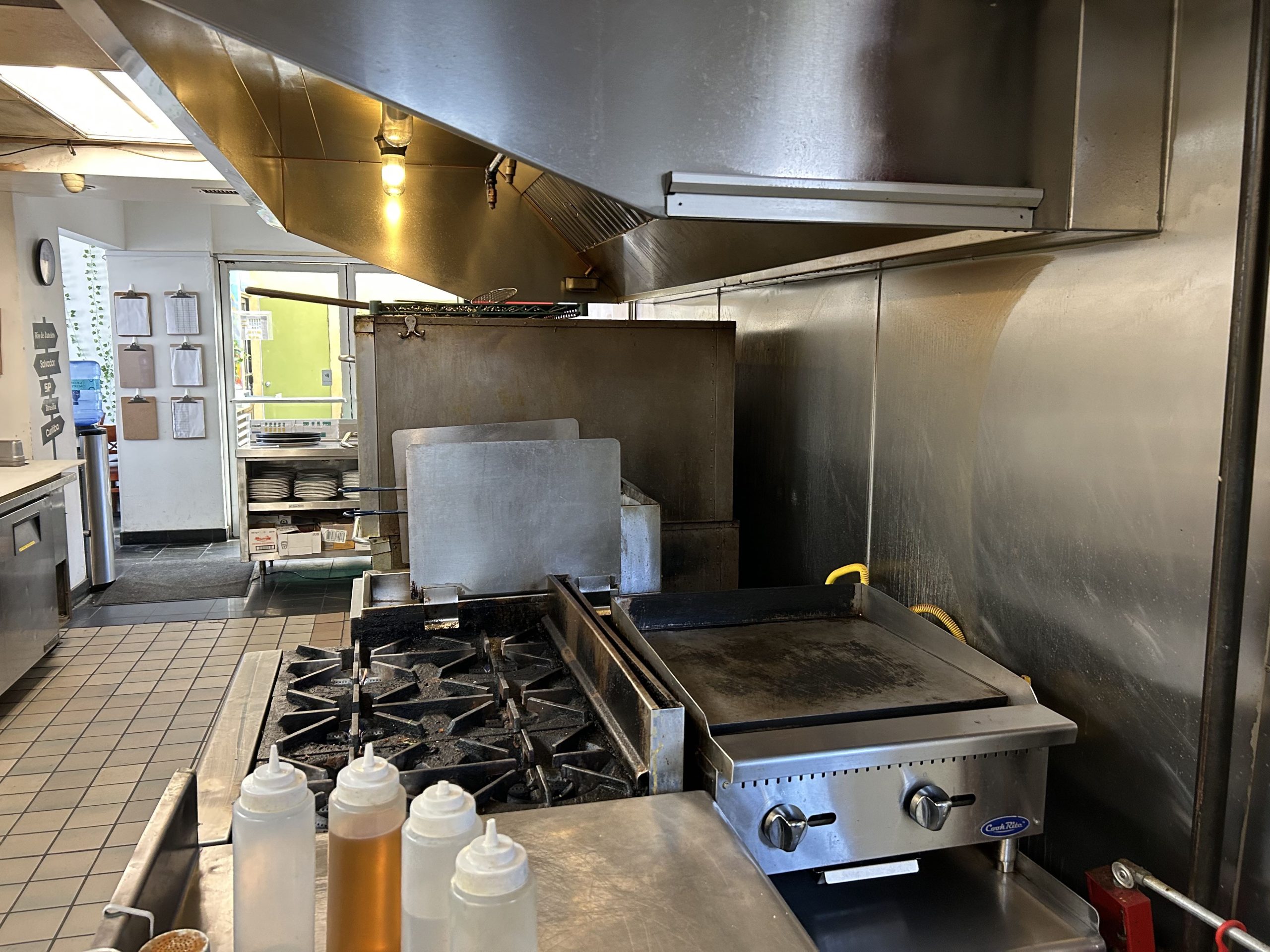
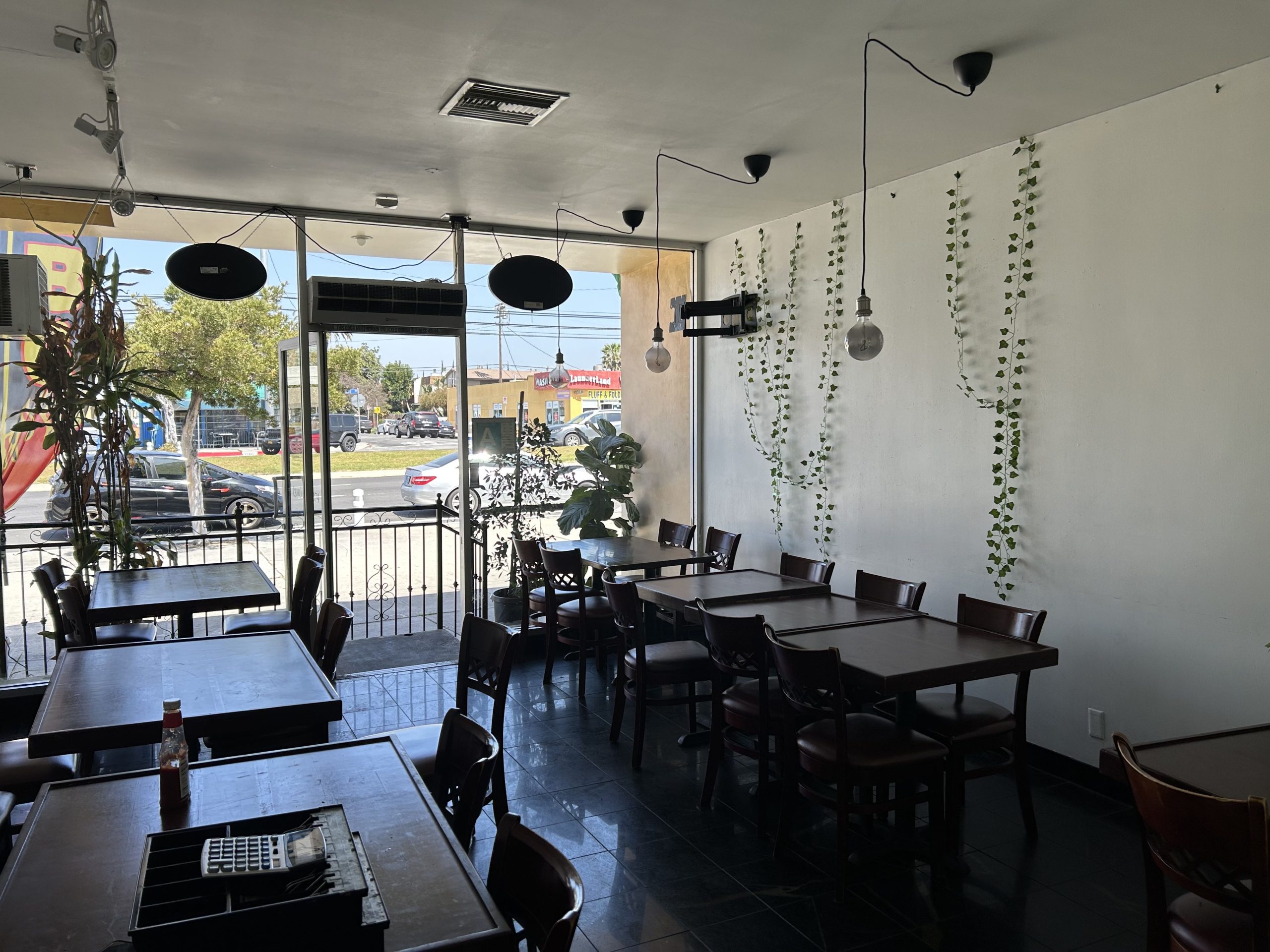
While in some ways this partnership has brought the mall back to its glory days, Carvalho and Montanari agree that there are still a lot of problems to deal with.
“This year has been really tough for us,” Carvalho recalled, “even worse than when we had just started.”
“December and April were really slow months (…) probably because of Christmas and tax season,” Montanari said. “People usually save up for those, so they feel like they can’t really afford to spend money in restaurants.”
Carvalho also believes that the initial novelty that drove the spike in customers has waned off in the Brazilian community.
“There are a lot of people on the weekends, but not really during the weekdays anymore (…) it’s like, they already know what the food is about, so they don’t feel the need to go try it out again,” said Carvalho.
Paired with damages caused by the heavy rainfall last December, Esquina Brazil is in a tougher place than its owners would like it to be. But they believe the answer to their struggles is right in front of them.
“We’re thinking of bringing in more American customers,” Carvalho said.
“This doesn’t mean we’ll stop cooking in the traditional Brazilian way, but having [Americans] come here would allow us to not depend so much on the Brazilian community,” said Montanari. “Look at all the successful Brazilian restaurants (…) they all target Americans.”
The pair believes that appealing to Americans will give them the customers they lack during the weekdays, supplanting a big issue they currently face.
“Since we open at 11, there are a lot of companies nearby (…) that are full of Americans that could eat here for lunch and have eaten here before. So we want to make sure to reach these Americans so we have people coming in every day,” said Carvalho.
Carvalho and Montanari don’t think this will compromise the restaurants as they currently stand. Rather, most of the changes will come in their messaging.
“Right now, we’re only doing our ads in Portuguese! So no one other than [Brazilians] can even read about us,” said Montanari.
“Obviously, we’re not going to lose our Brazilian essence,” said Carvalho.
While most of these changes are still in the works, the pair hopes that this year will be better than the last. And if their measures of saving their restaurants prove successful, LA’s hidden “little Brazil” may not be so hidden anymore.